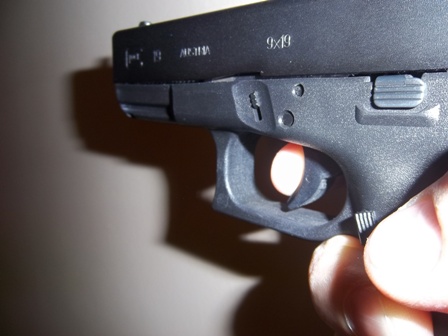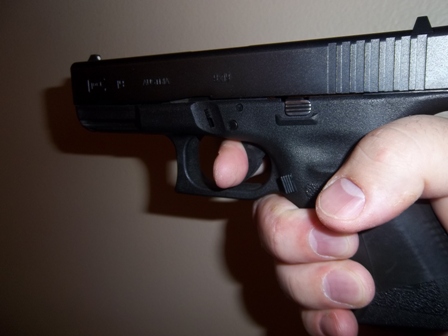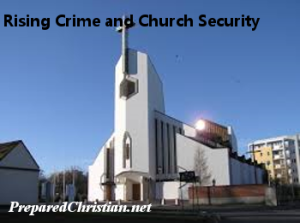I grew up in a house that didn’t own guns. It’s not that my parents were adverse to them, they have just never owned one. As an adult I was always pro second amendment but never owned a gun, that is until I got interested in prepping. The first few times I went to either a gun shop or an outdoor store that sold guns, I felt pretty foolish because of my lack of knowledge. Here are the steps I took to become informed and also some helpful tips that might be of interest even to those of you that have been shooters for years.
Training
The National Rifle Association
The NRA has a huge selection of training classes, ranging from the novice shooter to women’s and youth programs, as well as some more advanced courses. For more information please see the NRA’s Education and Training Headquarters.
Handgun Training
My wife and I found a class at a local gun range called First Shots. This is a beginner level handgun class that covers things like the four rules of gun safety, eye dominance, proper grip and types of handguns. We got to shoot a .22 revolver and a .22 semi-auto. There are First Shot classes in multiple states. Check the link to see if there is one near you.
Rifle Training
Hunter Safety
I decided to sign our kids and I up for a hunter safety class. This was a huge help for the three of us. It covered basic gun safety and also covered hunter safety, how to walk with a rifle and how to pick up a target. During the final class we all got to shoot a .22 rifle and a black powder rifle. You can probably find information about a hunter safety class from your states DNR.
Project Appleseed
I have not attended a Project Appleseed event, but I would like to in the future. Here is whet their website says about them: “Project Appleseed is an activity of The Revolutionary War Veterans Association, a 501(c)(3) non-profit organization dedicated to teaching every American our shared heritage and history as well as traditional rifle marksmanship skills.”
Procedures and Other Tips:
Four safety rules
First and foremost, here are the gun safety rules:
1. Treat every gun as if it were loaded.
2. Only point the gun at things you are willing to destroy.
3. Keep your finger off the trigger until your eyes are on the target.
4. Know what lies beyond your target.
Eye Dominance
Most of us have one eye that is dominant over the other. If you want to hit what you’re aiming at, you’ll need to use your dominant eye for target acquisition. There are a few different ways to tell which eye is dominant. The following is the one I use; pick an object at least a few feet away and cover that object with your index finger. Close one eye at a time; the eye that is still covering the object is your dominant eye.
If you’re right handed and left eye dominant, you can still shoot handguns right handed, to be accurate with rifles you’ll need to shoot them left handed. It’s unnatural for me, so I got a .22 rifle to train with.
Some people have a tendency to close their weak eye, to force the dominant to takeover. You lose your peripheral vision by doing this. If your dominant eye and dominant hand are opposites, here is a tip that has helped me and might help you as well; I am right handed and left eye dominant, so I leave both eyes open and turn my head slightly to the right, this lets my dominant eye pick up the target and keeps my right eye open to pick up any other movement.
Correct Grip
In this video Todd Jarrett will show the proper grip technique, stance and a few other tips. For those who have a hard time with videos, I’ll show some pictures showing the proper grip and finger placement, both on and off the trigger.
If you’re right handed and left eye dominant, you can still shoot handguns right handed, to be accurate with rifles you’ll need to shoot them left handed. It’s unnatural for me, so I got a .22 rifle to train with.
Some people have a tendency to close their weak eye, to force the dominant to takeover. You lose your peripheral vision by doing this. If your dominant eye and dominant hand are opposites, here is a tip that has helped me and might help you as well; I am right handed and left eye dominant, so I leave both eyes open and turn my head slightly to the right, this lets my dominant eye pick up the target and keeps my right eye open to pick up any other movement.
Keep your finger off the trigger
Most beginners tend to put their finger on the trigger as soon as the gun is in their hand. I think Hollywood can be blamed for this. The correct finger placement can be seen below. This is where your finger belongs until your ready to shoot.
Once your finger is on the trigger, use just the tip of your finger, where the nail bed is, not the finger to the first knuckle.
The first picture is the correct placement, with just the tip.
This picture is the incorrect placement, with the finger up to the first knuckle on the trigger. Placing your finger in this far will pull the gun in the direction the tip is pointing, when the trigger is squeezed.
Please click here to vote for Prepared Christian as a top Prepper site!
If you liked this article please think about sharing it on the social media listed below, thanks!






